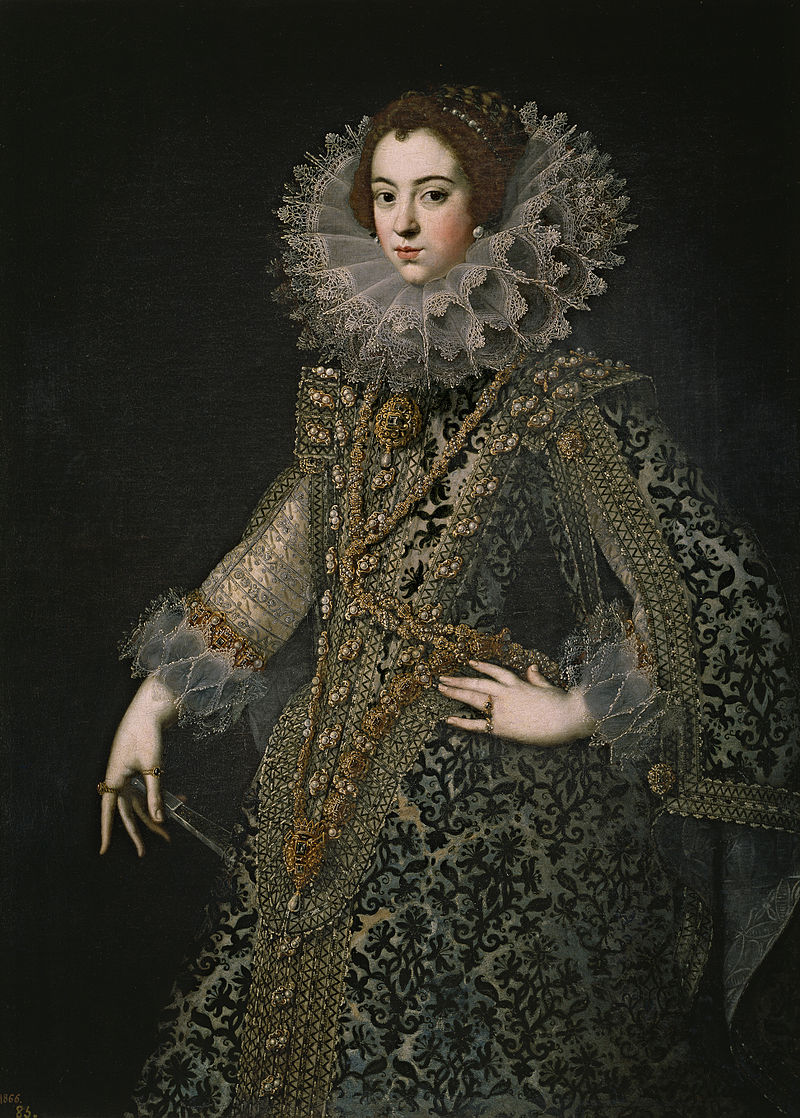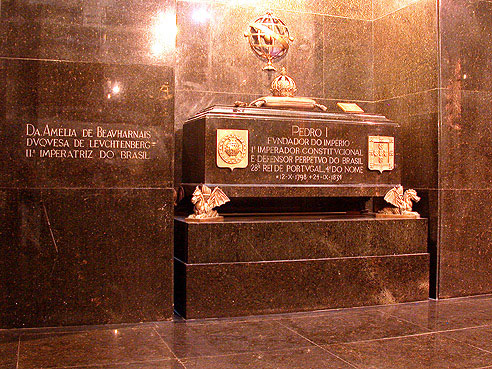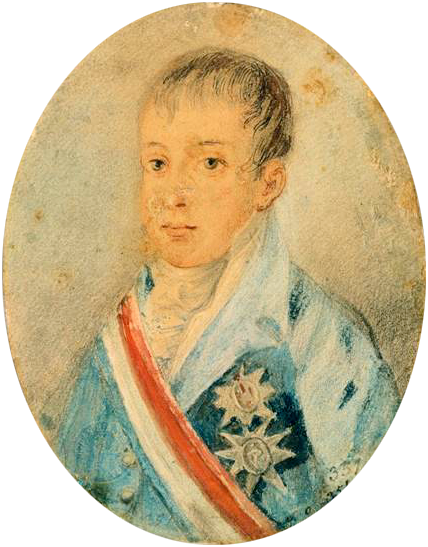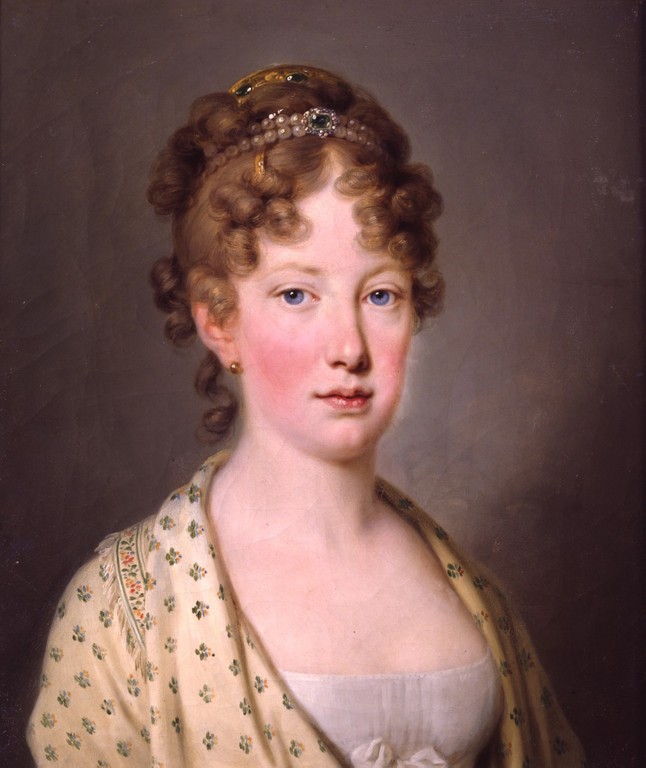by Susan Flantzer © Unofficial Royalty 2019

Elisabeth of France, Queen of Spain, Queen of Portugal; Credit – Wikipedia
The first wife of King Felipe IV of Spain (also King Filipe III of Portugal), Elisabeth of France, was born at the Château de Fontainebleau in France on November 22, 1602. She was the eldest of the three daughters and the second of the six children of King Henri IV of France and his second wife Marie de’ Medici. Elisabeth was known as Madame Royale, the traditional title of the eldest living unmarried daughter of a reigning French monarch.
Elisabeth had five siblings:
-
- King Louis XIII of France (1601 – 1643), married Anne of Austria. Infanta of Spain, had two surviving sons including King Louis XIV
- Christine of France (1606 – 1663) – married Vittorio Amedeo I, Duke of Savoy, had four surviving children
- Nicolas Henri, Duke of Orléans (1607 – 1611), died in childhood
- Gaston, Duke of Orléans (1608) – married (1) Marie de Bourbon, Duchess of Montpensier, had one daughter (2) Marguerite of Lorraine, had five children
- Henrietta Maria of France (1609 – 1669), married King Charles I of England, had four surviving children including King Charles II of England and King James II of England

King Henri IV with his second wife Marie de’ Medici and their children; Credit – Wikipedia
Soon after her birth, Elisabeth was betrothed to Filippo Emanuele, Prince of Piedmont, the son and heir of Carlo Emanuele I, Duke of Savoy but Filippo Emanuele died in 1604. Elisabeth was raised with her siblings by the royal governess Françoise de Montglat at the Château de Saint-Germain-en-Laye outside of Paris.
On May 14, 1610, when Elisabeth was eight-year-old, her father King Henri IV of France was assassinated. While traveling through Paris, Henri’s carriage was stopped on the Rue de Ferronnerie. A Catholic zealot, François Ravaillac, took the opportunity to rush up to the carriage and stab the king twice in the chest. Quickly subdued, Ravaillac was taken into custody and later executed. The king was taken to the Louvre Palace where he died. Elisabeth’s nine-year-old brother ascended the French throne as King Louis XIII. The widowed Queen, Marie de’ Medici was appointed Regent for her son.
During this time, there were struggles in France between the Catholics and the Protestants (French Huguenots). The new Regent, Marie de’ Medici promoted a strong alliance with the Spanish monarchy and favored Catholicism over Protestantism. To strengthen this bond, she arranged the marriages of her son King Louis XIII to Infanta Anna of Spain (known primarily as Anne of Austria), and her eldest daughter Elisabeth to Felipe, Prince of Asturias (the future King Felipe IV of Spain and King Felipe III of Portugal). Anna and Felipe were both the children of King Felipe III of Spain and his wife Margaret of Austria.

Infanta Anna of Spain, wife of King Louis XIII of France, and Felipe, Prince of Asturias, the future King Felipe IV of Spain, husband of Elisabeth of France in 1612; Credit – Wikipedia
On August 13, 1615, at the Louvre Palace in Paris, France, both young couples were married by proxy and soon, Elisabeth and her brother Louis XIII left Paris to meet their respective spouses. On Pheasant Island in the Bidassoa River that divides France and Spain, the two couples first met. This would be the last time Elisabeth would see her brother Louis. On November 25, 1615, at the Cathedral of St. Mary in Burgos, Spain, 13-year-old Elisabeth married 10-year-old Felipe, Prince of Asturias in a religious ceremony. Elisabeth adopted the Spanish version of her name Isabel and became the Princess of Asturias.

The exchange of the two princesses of France and Spain on the Bidassoa River by Peter Paul Rubens; Credit – Wikipedia
Because of the couple’s young age, the marriage was not consummated. The situation changed when Elisabeth’s father-in-law King Felipe III became ill. The marriage was consummated, and Elisabeth quickly became pregnant. King Felipe III died on March 31, 1621, and was succeeded by his 16-year-old son as King Felipe IV with Elisabeth becoming Queen Consort of Spain.
Elisabeth and Felipe had eight children but only their youngest child survived childhood. Besides having so many children die young, Elisabeth had three miscarriages. Her husband probably transmitted to her a venereal disease he contracted from one of his mistresses. This would explain the miscarriages and the many dead infants.
- Maria Margarita of Austria, Infanta of Spain (born and died 1621)
- Margarita Maria Catalina of Austria, Infanta of Spain (born and died 1623)
- Maria Eugenia of Austria, Infanta of Spain (1625 – 1627)
- Isabella Maria of Austria, Infanta of Spain (born and died 1627)
- Balthasar Carlos of Austria, Infante of Spain, Prince of Asturias (1629 – 1646), died at age 16 from smallpox
- Francisco Fernando of Austria, Infante of Spain (born and died 1634)
- Maria Ana Antonia of Austria, Infanta of Spain (born and died 1636)
- Maria Theresa of Austria, Infanta of Spain (1638 – 1683), married King Louis XIV of France, had six children but only one son survived childhood

King Felipe IV of Spain, circa 1631-1632; Credit – Wikipedia
Elisabeth was aware of her husband’s mistresses. There were rumors about her relationship with the diplomat Juan de Tassis, 2nd Count of Villamediana who was her gentleman-in-waiting. Between 1640 and 1642, Elisabeth served as regent for her husband in his absence during the Catalan Revolt.
Throughout her marriage, Elisabeth suffered in silence over the deaths of her children and her miscarriages. The fact that her husband’s mistresses gave him children made her feel even worse. Her feelings are evident in the letters sent to her brother Louis XIII and sister-in-law Anne of Austria. Weakened by her multiple pregnancies and miscarriages, Elisabeth died at the Royal Alcazar in Madrid, Spain on October 6, 1644, at the age of forty-one, after miscarrying a son. She was buried in the Pantheon of the Kings in the Royal Crypt of the Monastery of El Escorial at the Royal Site of San Lorenzo de El Escorial in San Lorenzo de El Escorial, Spain.

The Pantheon of the Kings in the Royal Crypt of the Monastery of El Escorial; Credit – Wikipedia
This article is the intellectual property of Unofficial Royalty and is NOT TO BE COPIED, EDITED, OR POSTED IN ANY FORM ON ANOTHER WEBSITE under any circumstances. It is permissible to use a link that directs to Unofficial Royalty.
Works Cited
- De.wikipedia.org. (2018). Élisabeth de Bourbon. [online] Available at: https://de.wikipedia.org/wiki/%C3%89lisabeth_de_Bourbon [Accessed 27 Oct. 2018].
- En.wikipedia.org. (2018). Elisabeth of France (1602–1644). [online] Available at: https://en.wikipedia.org/wiki/Elisabeth_of_France_(1602%E2%80%931644) [Accessed 27 Oct. 2018].
- Fr.wikipedia.org. (2018). Élisabeth de France (1602-1644). [online] Available at: https://fr.wikipedia.org/wiki/%C3%89lisabeth_de_France_(1602-1644) [Accessed 27 Oct. 2018].




























